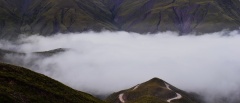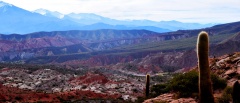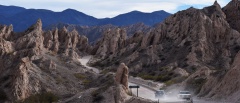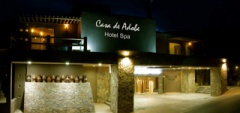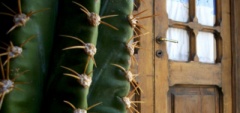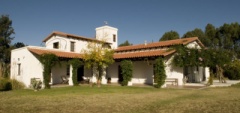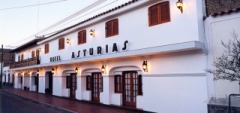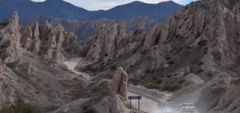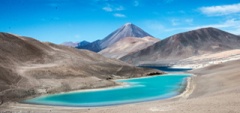Salta and the Northwest
The provinces of Salta and Jujuy are a delight to all who venture up here...
As one of the least visited areas of Argentina, the northwest, up against the dry Andes Range, is one of the true favourites for those that keep coming back to Argentina over the years. Below we have run through a few of the main areas to take a look at. Roughly speaking, most who come to this area will base themselves in the endearing city of Salta and then look to loop to the south or loop to the north, taking in the towns of Cafayate, Tilcara, Jujuy and Purmamarca.
SALTA - Capital of the north west and home to Argentina's indigenous population
Relatively un-trodden on the tourist circuit, the northern provinces of Argentina are still a delight to all those that visit, offering culture, wine, scenery and much more. The capital of the province, Salta, is steeped in history and still possesses some of the best examples of colonial architecture in Argentina. Along with this there is a wonderfully relaxed and inviting feel to the place with its languid squares and energetic bustle.
The first thing that strikes you upon arrival is a lack of European faces. This might sound bizarre but, in a country made up of around 95% European descendants, it does make the city stand out. For the most part, the inhabitants of Salta are Indian in origin, in particular Incan who, as a race had a strong influence in the area. Along with immigration from both the surrounding areas and nearby Bolivia, the population has steadily grown.
The Spaniards, who made use of the good water supply in order to graze and thus service the high altitude mines in nearby Bolivia, originally founded the city in1582. From these beginnings the city has remained fairly unchanged and many of the hotels that are on offer are converted from town houses of the wealthy in bygone times.
Probably one of the greatest pleasures of the city is that, even as it has expanded in size and population, the main sites are still located in a fairly small area, and there is a feeling of safety throughout. Centered predominantly around the Plaza 9 Julio, there are a few principal sites that are really worth taking the time to see. The first of these is the MAAM (Museo de Arqueologia de Alta Montana) museum, the best museum in the world for Incan heritage. Also on the main square is the stunning Catedral and, nearby, the Iglesia San Francisco.
On the whole, we are very big fans of Salta and would say that it is worth spending a couple of nights here while in Argentina, taking in the atmosphere of the square as the lights come on.
Where to stay: Legado Mitico, The Design Suites
CACHI - A small town on the Valles Calchaquies driving circuit to the south of Salta.
To drive into Cachi is to drive back in time. Emerging from the dusty plains and adobe brick buildings of the small villages along the track, Cachi is the central town in the region.
Focused on the main square that featured the few restaurants and the church for the village, this is a peaceful place where the pace of life is relaxed and easy. The village only offers a few simple places to stay, but they all have a certain charm and show how this area of the world has only started to head into the 21st century.
We are big fans of this sleepy village and definitely recommend a night here on the way through.
Where to stay: El Cortijo
CAFAYATE - 100 kms to the south of Salta, the centre for Torrontes wine production.
In recent years, as the tourism to the town has grown and the number of hotels increased, the great thing about this small town is that it has managed to retain its identity. On first site, the main square is the only really interesting feature about the town, with the surrounding streets being dusty and similar. The reasons, however, that people come to the town and area are plentiful.
The first of these is for the fantastic white wine that is produced here, the Torrontes. (see below for further reading). The second is for outstanding scenery of this region of Argentina…which is truly awe-inspiring!
Valles Calchaquies: This popular driving circuit is one of the most interesting possible out of Salta and reveals new delights at every turn. As a brief summary, the route takes you from flat tobacco plantations to cloud forest, to high altiplano, to forests of cacti, to deep red canyons and the “arrows of the Gods” rock formations. This is a spectacular trip and on day three, you emerge from the dusty tracks onto the tarmac roads that feed to Cafayate and relative civilization.
Quebrada de Cafayate: The Quebrada is part of the circuit discussed above and is a fascinating and beautiful series of red and ochre coloured sandstone valleys that have been formed by the Rio de las Conchas as it has weaved its way through the area.
With a range of hotels from the low to the high end, such as the Patios de Cafayate, it is definitely worthwhile to consider the town for a couple of nights.
Where to stay: Patios de Cafayate, Vinas de Cafayate
JUJUY - the other main city of the region, this is a sleepier version of Salta.
Commonly mentioned alongside the two other major cities of the north, Salta and Tucuman, Jujuy is probably the least the developed of the three but provides the gateway to the northern highlights of the Seven coloured hills and the Salinas Grandes.
Established by the Spanish in 1593, this was the most furthest north of any of their colonies in Argentina and, as such, bore the brunt of the their wrath from the nearby Bolivia, when Argentina strove for independence.
Unlike any of the other cities in Argentina, this northern enclave, along with its sister cities, no longer has a European decendency, but has a strong streak of the Incan and indigenous in the faces that walk past.
While it is not overly modern or ancient, there is still an inviting ambience to the place and so a night or two to break the journey from Cafayate northwards is not a bad idea.
PURMAMARCA - used as the base for exploring to the north of Salta.
Situated just off the main road that heads north from Jujuy, Purmamarca is remarkable for the famous “Cerro de los Siete Colores”, or hills of the seven colours, that overlook the village. Similar to other spots in the north, Purmamarca is a really good example of the traditional building techniques used up here with Adobe blocks of dried clay used to build.
With only a handful of residents, the dusty streets can easily be walked in an hour or so taking in the central square and surrounds.
The main reason, however, to come here is certainly for the rocks themselves that come alive in the early morning and sunset in particular. There is a great walk that runs round the main formation as well as offering views of some of the other coloured rocks of the area.
Another really good advantage of staying in Purmamarca is that it is also located on the main road up into the Andes and saves plenty of time if you are interested in the “Salinas Grandes”, the salt flats that are a must visit site in the area.
Where to stay: La Comarca
TILCARA - the last stop on the highway to Bolivia, Tilcara is a wonderful place to relax.
Just a little further along the main road from the Purmamarca, Tilcara is a similarly picturesque small town. Not quite as small at Purmamarca, there are a few more things to have a look at in the town as well as being a wider spread of accommodation options.
The main focus for the town is the central square that often hosts markets for local artisans to bring their wares (see Weaving). The town itself has become more geared today to the tourism trade that has steadily increased over the years, but it is still a fascinating insight into the simple and harsh lives of the rural population that eke out a living here.
Worth mentioning on top of Tilcara is the nearby village of Humuhuaca which is the largest settlement in the Quebrada de Humuhuaca. This small town has remained pretty much as it is for generations. Populated predominantly by the Quechua tribe, there is a real feel for being in the Andes proper and in an indigenous town. At night the cobbled stones and main square is alive with Andean singing and music.
Where to stay: Las Terrazas

